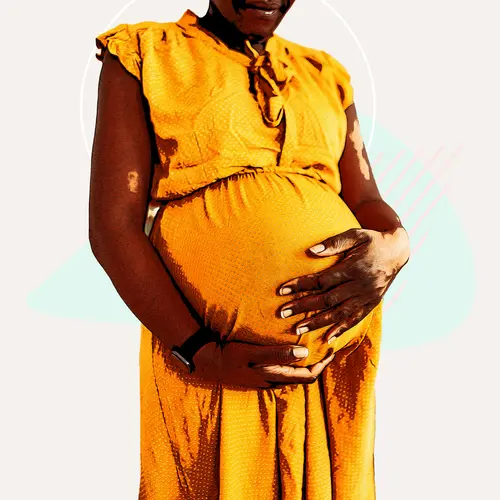Sleep is a popular topic among new parents, as most of them aren’t getting much of it. Every new parent wants to do whatever it takes to help their baby sleep safely and soundly for longer stretches of time at night.
You may be tempted to offer your baby a soft, warm blanket to help comfort them at night. However, blankets are not recommended until your baby reaches at least 12 months old because they can increase the risk of accidental suffocation.
Safe Sleep Guidelines for Your Baby
Blankets may seem harmless, but they're not safe during naptime or bedtime for your baby. Anything that could potentially cover their mouth and nose could lead to suffocation for your infant. The American Association of Pediatrics (AAP) has issued safe sleep guidelines. This includes a strong recommendation against having blankets in your baby’s crib.
Sudden infant death syndrome (SIDS) is the leading cause of death for infants between birth and 12 months of age. Research shows that there are easy ways to prevent your baby from being at risk for SIDS. To make it easy to remember, the AAP promotes the ABCs of safe sleep, which stands for Alone on their Back in a Crib:
- Alone: Parents and siblings should not sleep with the baby. “Alone” also means leaving blankets, pillows, toys, and crib bumpers out of your baby’s crib, too.
- Back: The best sleep position for a newborn is on their back. Sleeping on their side or stomach poses a risk of suffocation. There's a chance that your baby is not yet developed enough to move their head if they can’t breathe.
- Crib: Lay your baby down for naps and bedtime on a flat, firm surface such as in a crib, bassinet, or playpen that was made for infant sleep. Do not place your baby down for a nap in a bouncer or swing.
One note worth mentioning is that while experts recommend that your baby sleeps in their own bed, they also suggest that you keep the baby's crib in the same room with you for at least six months and preferably one year. With your baby nearby, you'll be more likely to hear them and help them immediately if something is wrong.
Blanket Alternatives
The biggest reason for using a blanket is to ensure your baby is warm while they sleep. If you live in a place that gets cold during the night, invest in footie pajamas to keep them warm. Swaddles are also safe for sleep as long as your infant is not yet rolling over. A swaddle gives your baby a sense of security and also provides added warmth.
As soon as your baby begins to roll over on their own, stop swaddling them for sleep. Leaving their arms free allows them to move more easily if they need to get their face away from something. Never use a weighted blanket for an infant.
Other Ways to Keep Your Baby Safe While They Sleep
Blankets are not the only things to keep in mind as your baby rests. Also take into consideration the following when you put them down to sleep:
Your baby's sleep position. While it's recommended to lay your baby down on their back, once they start rolling independently, they may turn to their stomach or side. If this happens, you don’t have to move them to their back again during the night.
A firm sleep surface. Ensure that your baby is never sleeping on a plush surface. When you push your hand down on the surface of your baby’s crib, it should feel flat and firm. Don’t lay them down on a blanket or pillow that may cover their face during sleep.
The temperature. You want your baby to be warm but not hot. Make sure that they don't overheat with footie pajamas and a swaddle if it’s warm outside.
Try breastfeeding. When you breastfeed, you provide the exact nutrition your baby needs. If you don’t want your baby to nurse, try pumping and offering a bottle. Your breast milk helps them fight off illness and infection, leaving their lungs clear for breathing.
Try a pacifier. Babies who use a pacifier at naptime and bedtime have a lower risk of SIDS. Make sure you choose a safe pacifier that has a wide enough base to not be a choking hazard.
Avoid smoking. Second-hand smoke is the smoke your baby breathes from being around a nearby smoker. Third-hand smoke is residue left behind on clothes, blankets, and wells. Since your baby’s lungs are highly sensitive, being around a smoker leaves them at a greater risk for SIDS.


